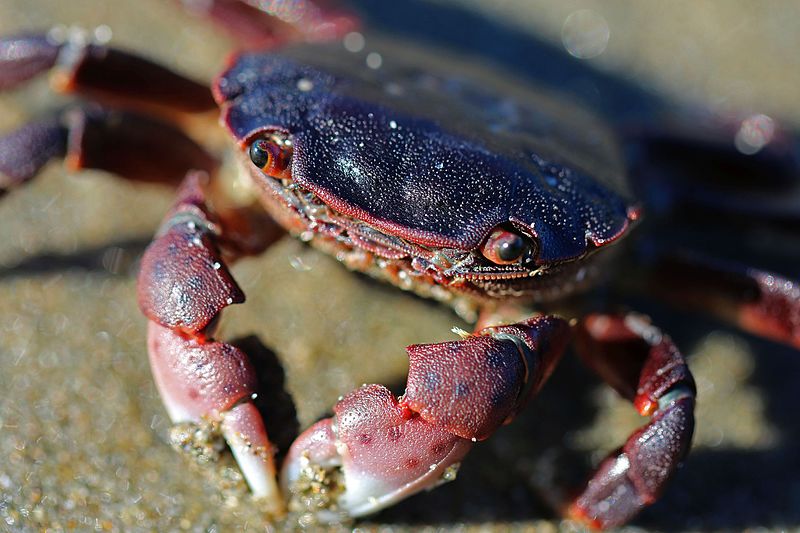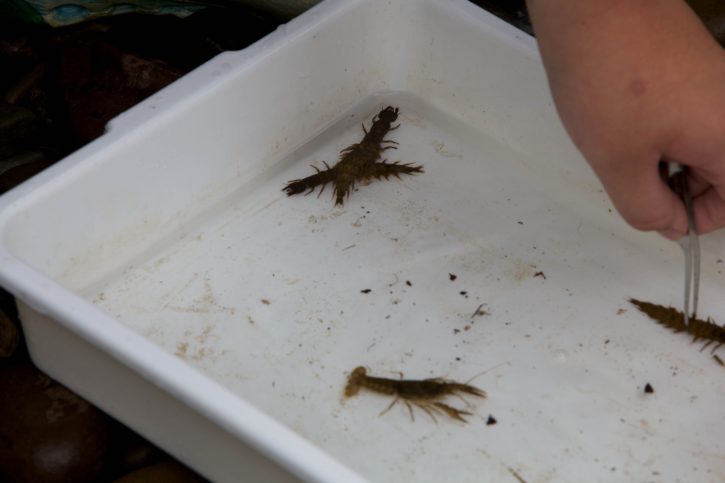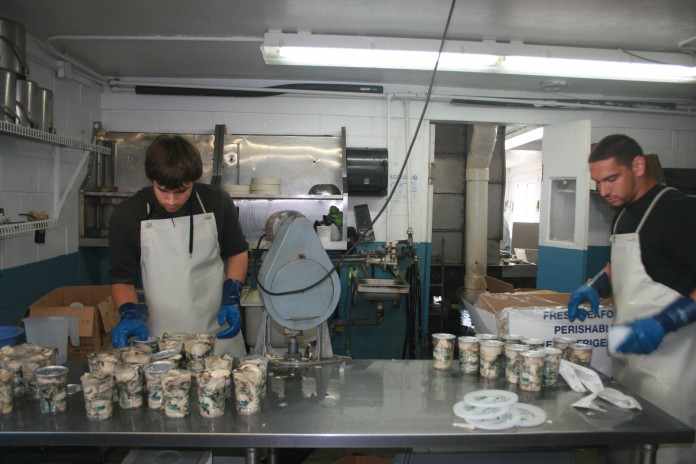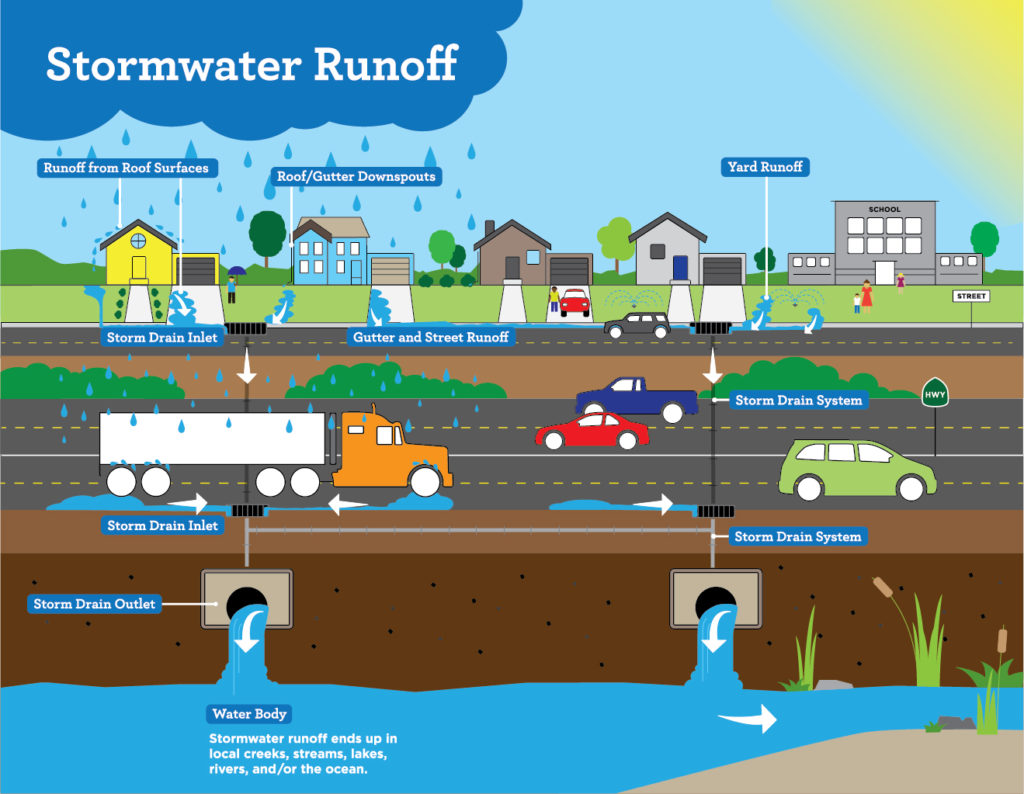Nearshore Field Trips occur every spring and early summer at the Nisqually Reach Nature Center. The Nisqually Estuary is one of the finest estuaries in Puget Sound and a great place to do some hands-on scientific surveys! Here are some of the things we do during these trips:
Crab Surveys

Become an expert at capturing and identifying crabs as a citizen scientists. In this nearshore exploration you’ll learn how to properly handle the purple shore crab (Hemigrapsus nudus) while you determine whether it’s a male or female and take accurate measurements using the metric system. How many male crabs do you find in your quadrat? How can we use this information to make estimates about the rest of the nearshore habitat?
Macroinvertebrates Surveys

Have you ever noticed how rocky the nearshore beaches can be? Those rocks are great habitat for the many species of macroinvertebrates that call the nearshore home. Have some fun and get a little bit muddy as you dig into the sand to see what’s hiding. These macroinvertebrates are an important part of the food web from forage fish to orcas! The simple presence of some invertebrates can indicate healthy water quality.
Shellfish Farm Tour

Take a hike north along the nearshore during a low tide to the National Fish & Oyster Shellfish Farm and witness the harvesting in action. Learn about how the oysters are processed, meet a live geoduck, dissect an oyster, and observe how an oyster is grown in its incubator.
Estuary Experiment
An estuary is a very special place where salt water and fresh water mix to create a special habitat for many different species. But how does the water mix together? What can we learn about the daily interactions between fresh and salt water under tidal influence? Find out by making your own estuary in a jar while watching the tides come in and go out.
Stormwater Runoff Experiment

What is the difference between point source and non-point source pollution? Which one is worse? Get your hands on a stormwater model that replicates the environment we live in, to answer this question and demonstrate the many ways that pollution on the surface of our roads and towns can affect water quality and what we can do to prevent pollution. How many things can you think of that might end up washing down the storm drain? Where do these things come from? Are there any solutions?
Additional Resources
View helpful resources for additional learning before/after your trip here!